-
 Melody
Hi there! Welcome to my shop. Let me know if you have any questions.
Melody
Hi there! Welcome to my shop. Let me know if you have any questions.
Your message has exceeded the limit.

Seamless Round Steel Pipe: A Comprehensive Guide to Steel Tubing and Its Applications
2025-10-27 16:01:55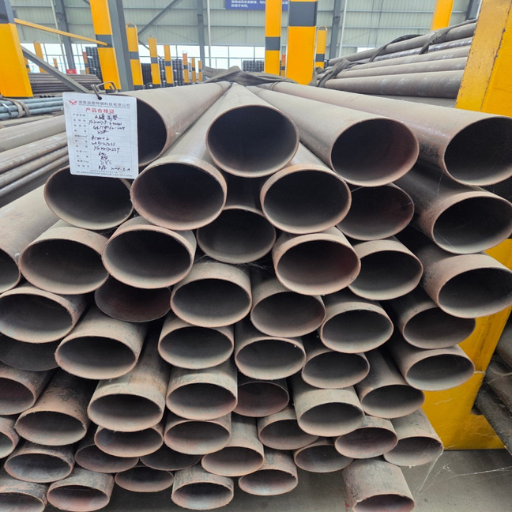
Steel is the primary material in today's infrastructure, and seamless round steel pipes are the most adaptable and reliable components of this material. The pipes' applications range from construction and manufacturing to energy production and overland transportation, powering industries and providing new avenues for innovation. But the real question is: what is it that makes seamless round steel pipes so extraordinary? What is the manufacturing process behind them, and what are the reasons that different industries are opting for these pipes for their superior strength, durability, and overall performance? This exhaustive guide takes us through the universe of seamless round steel tubes, analyzing their key features, manufacturing methods, and uses. No matter if you're an engineer, a producer or just someone with a common interest in technical progress, this piece will provide you with the knowledge necessary to grasp the role and significance of seamless round steel pipes in the world's development.
Introduction to Seamless Round Steel Tubing
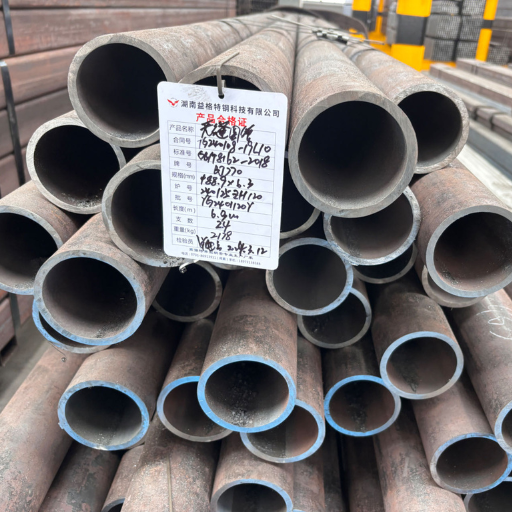
Seamless round steel tubing is a pipe produced without any welding or seams, providing a uniform structure and greater strength. The process of manufacturing seamless tubing involves heating and pressing solid steel billets into a round shape, yielding a product of uniform quality that can easily withstand high pressure and stress. Due to its toughness and dependability, seamless tubing is used in many industries, including construction, automotive, and energy, where it is mainly used for the transportation of liquids and gases and as structural support. Its seamless nature ensures there are no leaks or weak points, making it the first choice for the most demanding applications.
What is Seamless Round Steel Pipe?
Seamless round steel pipe is a hollow cylindrical steel product made without any welded seams which gives it excellent strength, resistance to pressure, and dependable performance for the industries of energy, automotive, and construction among others.
History and Evolution of Steel Tubing
The origins of steel tubing can be traced back to the early 19th century, when metallurgy and industrial manufacturing brought major changes to the way steel was produced. The invention of butt-welded tube manufacturing in 1824 marked the first significant step in the development of steel tubing. In this process, flat-rolled steel was heated and fused together to form the cylindrical shape. Then the process got evolved in the late 19th century through the development of seamless steel tubing by the Mannesmann brothers in 1886. They developed a method for producing pipes with no welds using a pilger-rolling mill and a mandrel process. Such a breakthrough laid the foundation for new steel-tubing production techniques that were later developed.
The 20th century saw a sharp rise in demand for tough, dependable steel tubing, mainly due to increased activity in the oil and gas, automotive, and infrastructure sectors. Seamless steel tubing was considered a must-have because of its high-strength nature along with the ability to endure high pressure and extreme temperature changes. Besides, World War II increased the overall requirements for steel tubing in military and industrial operations, thus, driving the progress of manufacturing methods even more.
The steel tubing market is growing and changing rapidly, according to current market analysis. A recent market research report forecasts the global pipe market, stating that it was valued at about $90 billion in 2022, with seamless pipes among the largest due to their performance. Besides, the emergence of new alloy compositions, together with precision manufacturing via high-frequency induction welding and laser measurement technology, has greatly impacted quality and efficiency in the steel tubing industry.
Steel tubing is now an indispensable component of modern infrastructure, transportation, energy generation, and many other industrial applications. The way it has evolved is a clear indication of progress in technology and materials science, and of the world's increasing need for durable, efficient materials to meet diverse requirements.
Key Benefits and Features of Seamless Round Steel Tubes
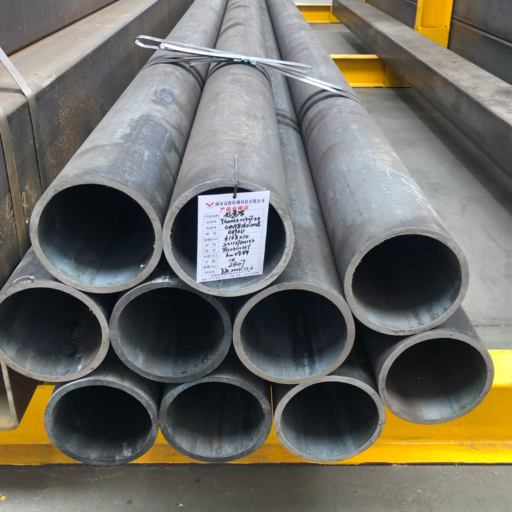
Enhanced Strength and Durability
Seamless round steel tubes are produced without welded seams, which means they have superior structural strength and excellent integrity. Thus, they are very much resistant to deformation and can deal with very high-pressure applications.
Excellent Corrosion Resistance
These tubes are very durable against corrosion thanks to their advanced finishing and protective coatings, thus, they can be used even in very harsh environments like offshore structures and chemical processing plants.
Exceptional Dimensional Accuracy
The manufacturing of seamless tubes requires very precise tolerances, resulting in consistent dimensions and smooth surfaces. The accuracy of the production process is so high that it not only improves performance but also makes installation in complex assemblies easier.
Versatility Across Applications
Seamless round steel tubes are offered in a vast array of sizes and grades, hence they can be used in various sectors like automotive, aerospace, construction, and energy where specific solutions are needed.
Superior Heat and Pressure Resistance
The tubes are resistant to very high temperatures and pressures, making them suitable for boilers, heat exchangers, and high-performance hydraulic systems; thus, they are the best choice for these applications.
Advantages of Using Seamless Tubing
Enhanced Strength and Durability
Seamless tubing is produced with no welded joints; this process eliminates weak areas and ensures the full tube's strength. Therefore, it is more robust and trustworthy, especially in demanding situations.
Improved Resistance to Corrosion
No welds mean lower chances of the seam being corroded. Seamless tubing is made of premium materials like stainless steel which guarantees its resistance to rust and other environmental degradation.
Superior Performance in Extreme Environments
Seamless tubes can easily handle great demands thanks to their high heat and pressure resistance. They are found in industries such as energy generation and chemical processing, which operate under extreme conditions.
Precise Dimensions and Finishes
Seamless tubes are manufactured with remarkable accuracy, providing constant dimensions, roundness, and surface quality. This makes them very appropriate for critical applications that require precise measurements, such as in the aerospace and medical industries.
Reduced Risk of Defects
Seamless tubes with no welded areas usually have fewer defects and flaws which also diminishes the likelihood of failure. This reliability is one of the reasons they are sometimes used in applications like hydraulic systems, boilers, and structural frameworks where superior integrity is a must.
Mechanical Properties and Strength
Seamless tubes are very well-known for their superior mechanical properties and powerfulness which make them the main choice for the most demanding applications requiring extreme conditions of durability and resilience. The following are the five main mechanical properties and the details of each:
Tensile Strength
Seamless tubes typically provide significant tensile strength, enabling them to withstand very high pulling forces without breaking. This characteristic is very important in both construction and mechanical applications.
Yield Strength
Yield point describes the level of stress at which the material starts to deform irreversibly. Seamless tubes show remarkable yield strength which guarantees excellent performance even with heavy loads.
Hardness
Seamless tubes are generally made with very high hardness levels, which enable them to withstand wear and tear and thus last longer in abrasive or high-pressure environments.
Elongation
Such tubes exhibit good elongation and can stretch under stress to a limited extent without breaking. The flexibility of these tubes contributes to their overall toughness under variable loads.
Impact Resistance
Seamless tubes are able to absorb sudden impacts and shocks very well thus they find their use in areas where mechanical vibration or collision forces are present.
Industry Insights and Applications of Steel Tubing
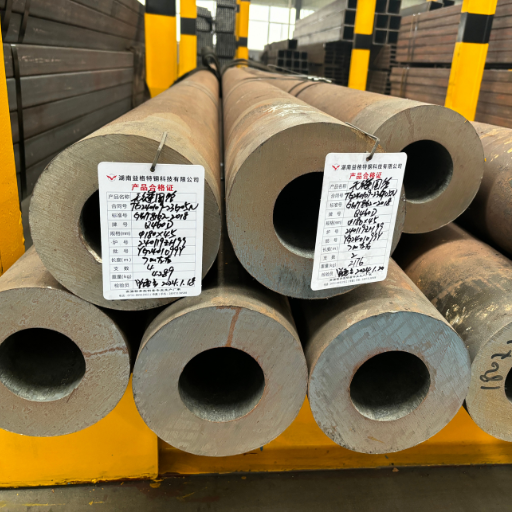
Steel tubing is the colloquial name for a product used as a basis for various industries due to its very strong, versatile, and durable properties. Market research from a few weeks back brings out that steel tubing market size, which was over $60 billion in 2022 all over the world, is going to grow at a CAGR of 4 to 5% until 2030, but this is not a thing of just one sector; construction, automotive, and energy is the reason behind this demand rise.
1. Building Sector
The structural steel comes to the company, and the steel pipes used before are now used for building support, scaffolding, and laying piping systems. These parts are very useful in high-class property buildings and in large-scale tunneling and bridge projects, among other infrastructure, due to their ability to withstand maximum pressure and harsh environments. And, in case of water and gas pipes, seamless steel tubes are the favorite for practically no leaks or wear and tear because of their everyday life and longevity.
2. Power and Energy Sector
In the energy field, steel tubing is a basic necessity, not only for oil and gas extraction but also for power generation and renewable energy production plants. For instance, on drilling sites and underwater gas and oil extraction platforms, steel pipes are used both for drilling machines and for supporting structures. In addition, they are used in geothermal and wind power systems for cooling, where both resistance and efficiency are the keys to success. The market share of heat exchanger tubes, often seamless and made of steel, is also growing rapidly.
3. Automotive Industry
There is steel tubing in all parts of the automotive sector - less gas lines, exhaust systems, and other great parts using steel tubes. High-strength, low-weight steel tubes are aiding the development of electric vehicles (EVs), where power consumption and the battery's light weight are the two main considerations. There are reports that show how the automotive industry is turning more and more towards high-performance steel tubes for the platform of both traditional and EVs cars.
4. Industrial Manufacturing
Besides supporting production and maintenance awards, steel tubing at factories and industrial plants ensures safety and environmental protection during the transportation of raw materials and finished goods. Several manufacturing processes require precision-engineered tubes with tight tolerances, and seamless steel products provide the necessary reliability. These tubes are increasingly used in conveyors, hydraulic systems, and high-pressure applications.
5. Emerging Applications in Healthcare and Aerospace
Advances in materials science have opened new opportunities for steel tubing in the aerospace and medical industries. Aerospace-grade stainless steel tubes are now widely used in aircraft engines, fuel systems, and structural units due to their superior strength-to-weight ratio and resistance to extreme temperatures. Similarly, in the healthcare field, precision steel tubing is being increasingly used for medical devices, surgical instruments, and even prosthetics.
Market Forecast and Challenges
The global move towards sustainability is inspiring manufacturers to go green in their manufacturing processes besides recycling of steel tubes and developing of greener production methods. The industry, however, has to cope with challenges such as fluctuating raw material prices and close competition from alternative materials like composites and plastics. However, the strength and flexibility of steel tubing will always make it a core product across the industry, despite its market downsides.
Applications in Construction and Structural Engineering
Steel tubes are among the main materials used in construction and structural engineering. Besides that, their versatility and durability are also among the main reasons for the demand for steel tubings in construction. Their widespread application stems from their being the most sought-after materials for the stability and functionality of various structures. Here are five major areas of application in this sector:
Structural Framing
Steel tubes are often used in building framing, providing a strong, dependable foundation for both small and large structures. Their ability to support heavy loads makes them the skeleton of skyscrapers, bridges, and industrial complexes.
Scaffolding Systems
Steel tubing is the primary material used for temporary scaffolding, as it ensures safety and stability. The combination of the pipe’s lightweight nature and its strength makes it very suitable for making secure platforms for construction workers during building projects.
Piping and Plumbing
In plumbing applications, steel tubing is a highly preferred material and can be used in both above-ground and underground systems where durability and corrosion resistance are of utmost importance. Water supply, sewage systems, and gas transfer pipelines are among the applications where it is used.
Industrial Sheds and Warehouses
The use of pre-fabricated steel tubing is widespread in the construction of industrial sheds, warehouses, and storage facilities. The extremely high strength and long-lasting nature of steel used in these structures are their mainstay.
Architectural Elements
Besides serving structural purposes, tubing is also involved in creative architectural forms such as curving, modern railing, and aesthetic frameworks. The ability to create complex shapes without compromising the structure's stability is a property of its malleability.
The existence of these applications clearly underscores the significance of steel tubing in enhancing safety, functionality, and innovation in construction and engineering projects.
Seamless Round Tubes in Mechanical Applications
Seamless round tubes are a vital factor in mechanical applications mainly because of their ability to endure, exactness, and ability to handle high stress and pressure. Here are five main areas where seamless round tubes are used in the mechanical industry:
Hydraulic Systems
Seamless round tubes form the backbone of hydraulic systems, offering leakproof operation and high-pressure resistance, two key requirements for efficiently moving fluids. An example is their use in advanced hydraulic machines where they handle pressures beyond 10,000 PSI.
Automotive Industry
Seamless round tubes are the first choice in the making of drive shafts, steering parts, and vehicle suspension systems. Precise geometries and exceptional strength significantly increase the safety and performance of cars.
Aerospace Engineering
Round seamless tubes are a vital source of supply for the production of lightweight and strong structural parts in airplanes and spacecraft. The outstanding quality of their resistance to extreme temperatures and pressures ensures dependability in critical aerospace operations.
Oil and Gas Sector
Seamless round tubes from the drilling rigs to the pipelines, which are the very places that the very worst conditions prevail, provide the strength necessary to operate in those environments. They do not corrode and retain their ability to withstand high pressure and temperature.
Precision Equipment Manufacturing
Seamless round tubes, thanks to their precision and smooth finish, are used in the manufacture of precision tools, machines, and bearings that wear less and hence are more reliable in operation.
The seamless round tube applications underscore their versatility and necessity in the industry, particularly in terms of performance, safety, and innovation.
Comparisons with Other Types of Pipes
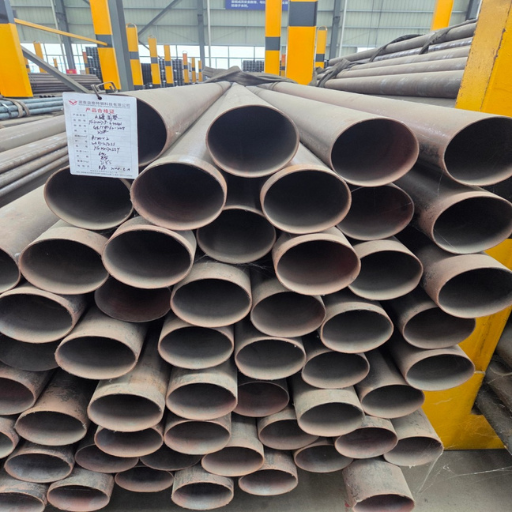
In comparing seamless round tubes with other pipe types, several vital differences emerge that highlight their benefits and shortcomings, depending on the application. The following are five important comparisons:
Seamless Pipes versus Welded Pipes
Pipes without seams are produced as a whole and have no weld seams, which means not only greater strength but also getting a uniform structure throughout their length. Therefore, they are the best choice for high-pressure and high-temperature applications. In contrast to this, pressure leakage could occur because of welding and that would be the weakest point. Seamless pipes usually have a longer service life, but at the cost of higher production costs.
Seamless Pipes versus ERW Pipes (Electric Resistance Welded)
The process of making Electric Resistance Welded (ERW) pipes involves rolling and welding flat steel. They are cheap and good for low-pressure applications but still not a match for seamless pipes when it comes to high durability, integrity of structure, and no corrosion, since there are no welded joints available.
Seamless Pipes versus Cast Iron Pipes
Cast iron is a heavier, less controllable material, so it would not be a good choice for changing systems or applications where weight is a problem. The opposite is true for seamless pipes, which are lighter and more flexible, making them more suitable for modern infrastructure and even more so for demanding industry requirements.
Seamless Pipes versus PVC Pipes
The main usage of PVC pipes is water supply and drainage. They have the advantages of being light, cheap, and resistant to corrosion, but they do not possess the strength and heat resistance of seamless pipes, thus being unsuitable in case of high-pressure or high-temperature.
Seamless Pipes versus Copper Pipes
The main area of application for copper pipes is plumbing and heat exchangers due to their excellent thermal conductivity and corrosion resistance. However, in a lot of cases, seamless pipes are preferred in industrial settings because the extreme pressures and temperatures would exceed copper's tolerances.
These comparisons reinforcing the necessity of seamless round tubes in critical applications through various sectors where strength, reliability, and durability are the most important factors.
Seamless vs. Welded Steel Tubing
Parameter | Seamless Steel Tubing | Welded Steel Tubing |
|---|---|---|
Manufacturing Process | Extruded from solid billet, no weld seam | Rolled and welded from flat steel strip |
Strength | Stronger, no weak points | Slightly weaker at weld seams |
Corrosion Resistance | Higher due to uniform structure | Lower, especially near weld seams |
Pressure Rating | Handles higher pressure | Lower pressure tolerance |
Cost | More expensive | More affordable |
Size Availability | Limited sizes, smaller diameters | Wider range, larger diameters |
Wall Thickness | Thicker walls possible | Thinner walls for larger diameters |
Surface Finish | Smoother, uniform | May have visible weld seam |
Lead Time | Longer production time | Faster production |
Applications | High-pressure, critical uses (e.g., aerospace) | General-purpose, cost-sensitive uses |
Comparison of Carbon Steel vs. Alloy Steel Tubes
Parameter | Carbon Steel Tubes | Alloy Steel Tubes |
|---|---|---|
Composition | Iron, carbon, minor elements | Iron, carbon, alloying elements (e.g., Cr, Ni) |
Strength | Moderate strength | Higher strength |
Corrosion Resistance | Low, needs coating | High, inherent resistance |
Heat Resistance | Limited | Excellent |
Cost | Affordable | More expensive |
Machinability | Easier to machine | Requires specialized techniques |
Weldability | Easier to weld | More challenging |
Applications | Construction, pipelines, tools | Aerospace, automotive, and power plants |
Durability | Moderate | High |
Wear Resistance | Lower | Higher |
Cost and Performance Analysis
When comparing seamless and welded tubes in terms of cost and performance, several factors must be considered. These factors play a major role in determining the applicability of the two types of tubes in different areas. The factors are as follows:
Material Cost
Welded tubes are cheaper to produce than seamless tubes, which makes them the only cost-effective choice for less demanding applications.
Seamless tubes are more expensive than welded tubes, which can push them out of certain application areas when the application is very cost-sensitive.
Durability and Strength
Seamless tubes have a uniform structure with no welds, hence they are stronger and are more durable in the high-pressure and high-temperature range.
Welded tubes are strong but in some cases, they can be less reliable in extreme environments because of the potential weaknesses in the weld seams.
Manufacturing Time
Seamless production is an intricate, time-consuming process, but the final product is of high quality and consistent.
Welded time is shorter —the assembly of pipes and tubes —so discussing that for large-volume consumption may decrease lead time for projects.
Performance in Corrosive Environments
In a corrosive environment, seamless tubes have a clear advantage over welded tubes, as the latter's structure is discontinuous and contains weld points.
While welded tubes may not be as corrosion-resistant as seamless ones, they may require additional treatments or coatings to achieve the same level of corrosion resistance.
Total Lifecycle Costs
Seamless tubes have a high upfront cost; however, they can be a good investment from a maintenance and replacement perspective because of their reliability and durability in the long term.
More frequent inspections and repairs may be needed for welded tubes, potentially increasing lifecycle costs in certain applications.
The comparison presents the dilemma of choosing between upfront costs and long-term performance, thereby enabling industries to select the most appropriate option for their particular needs and limitations.
Tags: seamless round steel pipe


